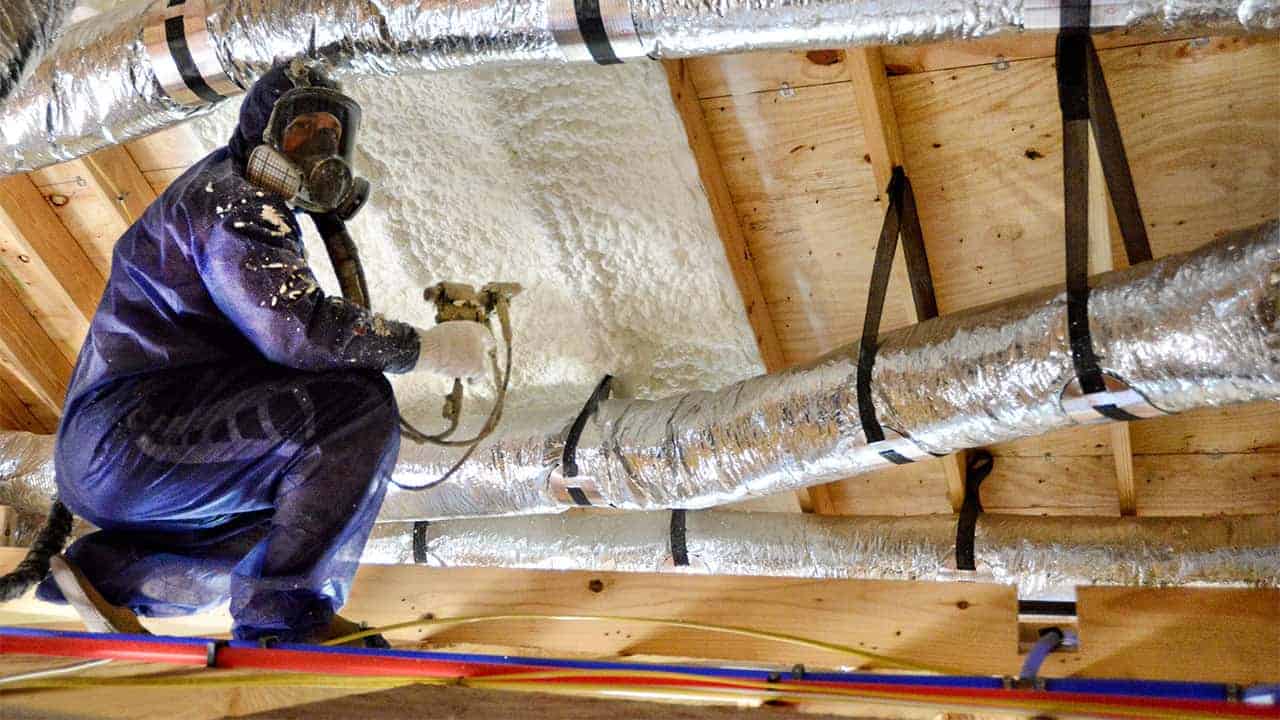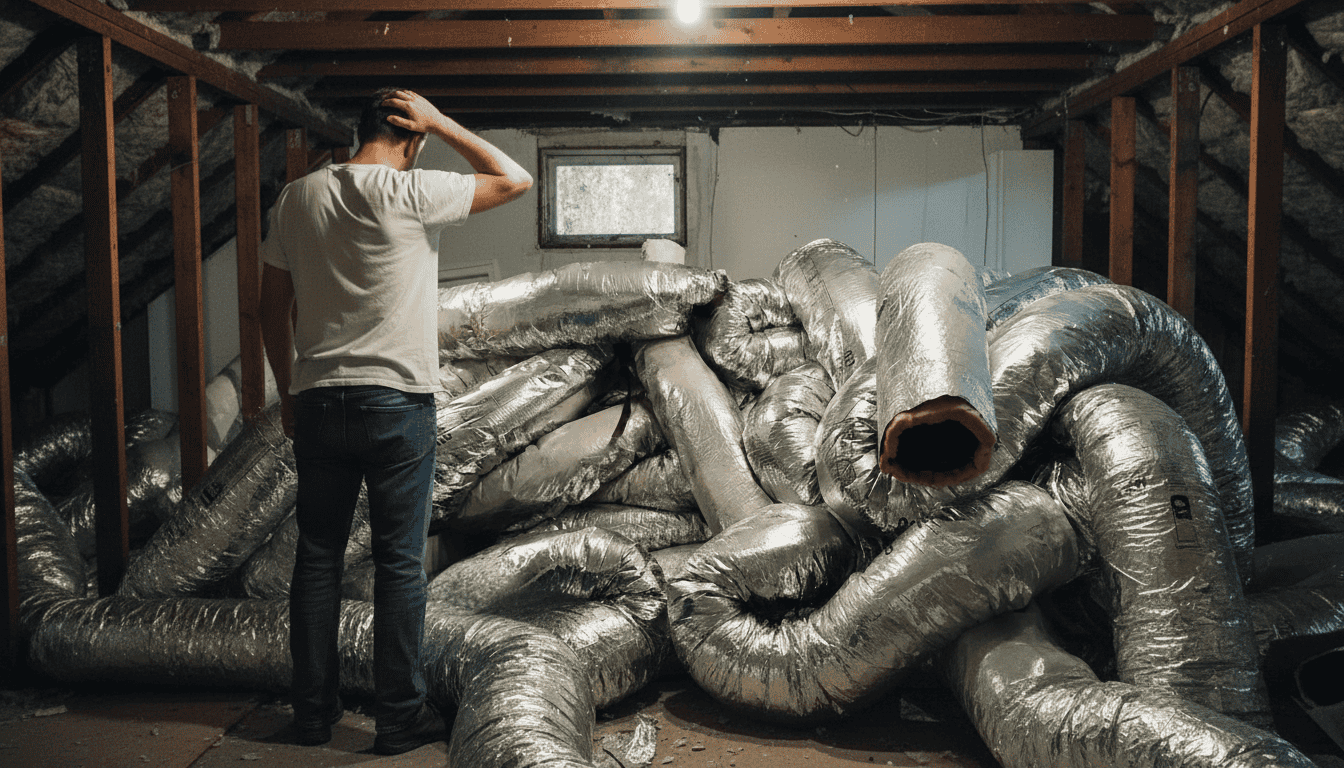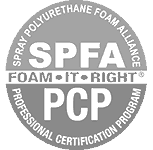What Is Spray Foam Insulation?
Spray Polyurethane Foam Insulation or Spray Foam Insulation as it is commonly referred to, has quickly become one of the favored insulation products for folks that want to maximize the energy efficiency of their homes and businesses.
So, what is spray foam insulation? Spray foam insulation is a form of polyurethane that has been custom formulated for insulation applications. Polyurethane was originally invented by Otto Bayer in 1937 and has since been adapted for use in everything from seat cushions to packaging material, to shoe soles. Polyurethane foam made its debut as a building insulation product in 1979.
Spray foam insulation is custom applied on-site using advanced equipment that mixes the two-part formula so it can be spray applied by a trained installer. The two-part mixture is composed of an isocyanate and polyol resin [both liquids]. When these two liquids are mixed, they initiate a chemical reaction that creates the polyurethane foam that can be sprayed into wall cavities, attics, under raised homes, and more.
When properly installed, spray foam insulation creates monolithic insulation that provides excellent thermal insulation and air-sealing qualities.
Spray Foam Insulation – Beyond R-Value
All insulation products are rated for their thermal insulation performance and given a grade called “R-Value.” R-value is the term given to thermal resistance to heat flow. The higher the R-value of an insulation product, the more effective the insulation properties. But, when comparing spray foam insulation to other insulation products, spray foam insulation’s performance goes way beyond R-Value.
Virtually all other insulation products available come in two types: batts/panels or loose/blow-in. Batts are basically the big rolls of fiberglass insulation that are cut to size and “friction fit” into place, and loose fiberglass or cellulose is blown into place. Both of these insulation types can provide good insulation qualities but fall short on overall performance as they often leave gaps where the insulation doesn’t reach, and they provide no air barrier qualities. Additionally, batt and blown-in insulation will break down over time, further reducing their overall insulation performance.
This is where spray foam insulation puts all other insulation products to shame. When properly applied, spray foam insulation creates a seamless, monolithic insulation application that also provides superior air sealing qualities. In a single application, you get a high R-Value, plus air sealing, plus a product that won’t break-down, shrink or settle over time. This is why spray foam insulation goes beyond R-Value.
Spray Foam Insulation – Types & Performance
Spray polyurethane foam insulation comes in three types: light density, medium density, and high density. High-density foam is primarily used in roofing and exterior applications, and not in typical residential or commercial insulation applications, so we won’t be covering it in this post.
Light-density foam is commonly referred to as Open Cell or Half Pound Foam. Medium-density foam is commonly referred to as Closed Cell or Two Pound Foam. Both of these products provide excellent insulation qualities, as well as air barriers when installed to recommended depths.
Open Cell Foam
Open-cell, or half-pound foam is a semi-rigid material that commonly delivers an R-Value of about 3.8 per installed inch. Open-cell foam has a bit of a sponge-like quality when installed, and will provide an effective air barrier when installed to a depth of 5.5 inches.
Half-pound foam is typically installed in exterior walls and unvented attic applications and provides good sound insulation qualities as well.
Closed Cell Foam
Closed cell or two-pound foam is a rigid material that commonly delivers an R-Value of about 5.1 – 6 per installed inch. Closed-cell foam, when installed at a depth of 2 inches, provides an effective air, vapor, and water barrier in addition to its exceptional insulation performance.
Closed cell foam is typically installed where very high R-values are required, and it is the only insulation product recommended for installation under a raised home. Closed-cell foam can also be installed in combination with open-cell foam and even blown-in insulation products.
Spray Foam Insulation – Applications
Spray polyurethane foam insulation can be installed in a myriad of applications. The most common are new residential construction and renovation projects, as well as light commercial applications like cold storage warehouses, office buildings, and even livestock buildings.
In residential applications, open-cell foam can be installed in wall cavities and attics, and closed-cell foam can be installed in wall cavities, attics, under raised floors, and on HVAC equipment to insulate rigid duct work.
In commercial applications, open-cell foam is typically installed in wall cavities and closed-cell foam is installed in warehouses, cold storage buildings, or other applications where high R-Values per installed inch are required, or moisture and/or humidity play a factor.
When spray foam will be used in a residential application, either in new construction or renovations, it is very important that the HVAC contractor knows about it. Homes insulated with spray foam insulation typically need smaller cooling and heating systems due to the high performance of the insulation. It is highly recommended that you have a proper Manual J calculation performed to make sure your HVAC is properly sized.
Wrapping It Up
Choosing the right insulation for your new construction or renovation project is a key item for your energy efficiency, overall comfort, and indoor air quality. For folks that want the ultimate in insulation performance, spray foam insulation may very well be a perfect choice.
Yes, spray foam insulation is more expensive than other insulation products, but the higher upfront price is offset on two levels: your short-term and long-term costs. Your short-term costs are reduced by not needing much less labor-intensive air sealing work to control air infiltration and smaller HVAC system size requirements. And your long-term costs are reduced through significantly lower cooling and heating bills.
The last item of note – Installing spray foam insulation is not something just anyone can do correctly or effectively. Installing spray foam insulation is an art form unto itself. With the rise in popularity of spray foam insulation, virtually anyone willing to invest in the equipment thinks they can install spray foam insulation. Here at Diversified, we are constantly called upon to fix the substandard spray foam insulation jobs by the “discount” spray foam companies in the Gulf South, because we employ the most experienced spray foam installers in the region.
So, when you see a $0.99 per square foot deal out there, understand that it comes with a very high risk of a substandard installation job done by an inexperienced sprayer.
For more information about Spray Foam Insulation, and overall home performance, contact us today – 504-273-7779 – [email protected].




















